Site-specific works are entirely different from works of art created for circulation on the art market. A site-specific work does not need to harmonise with all potential environments; on the contrary, it should reflect what is typical of a specific place. Therefore, Katarina Löfström has tried to find something that would carefully enhance and accentuate the nature of the High Coast when she was drafting the work Passage.
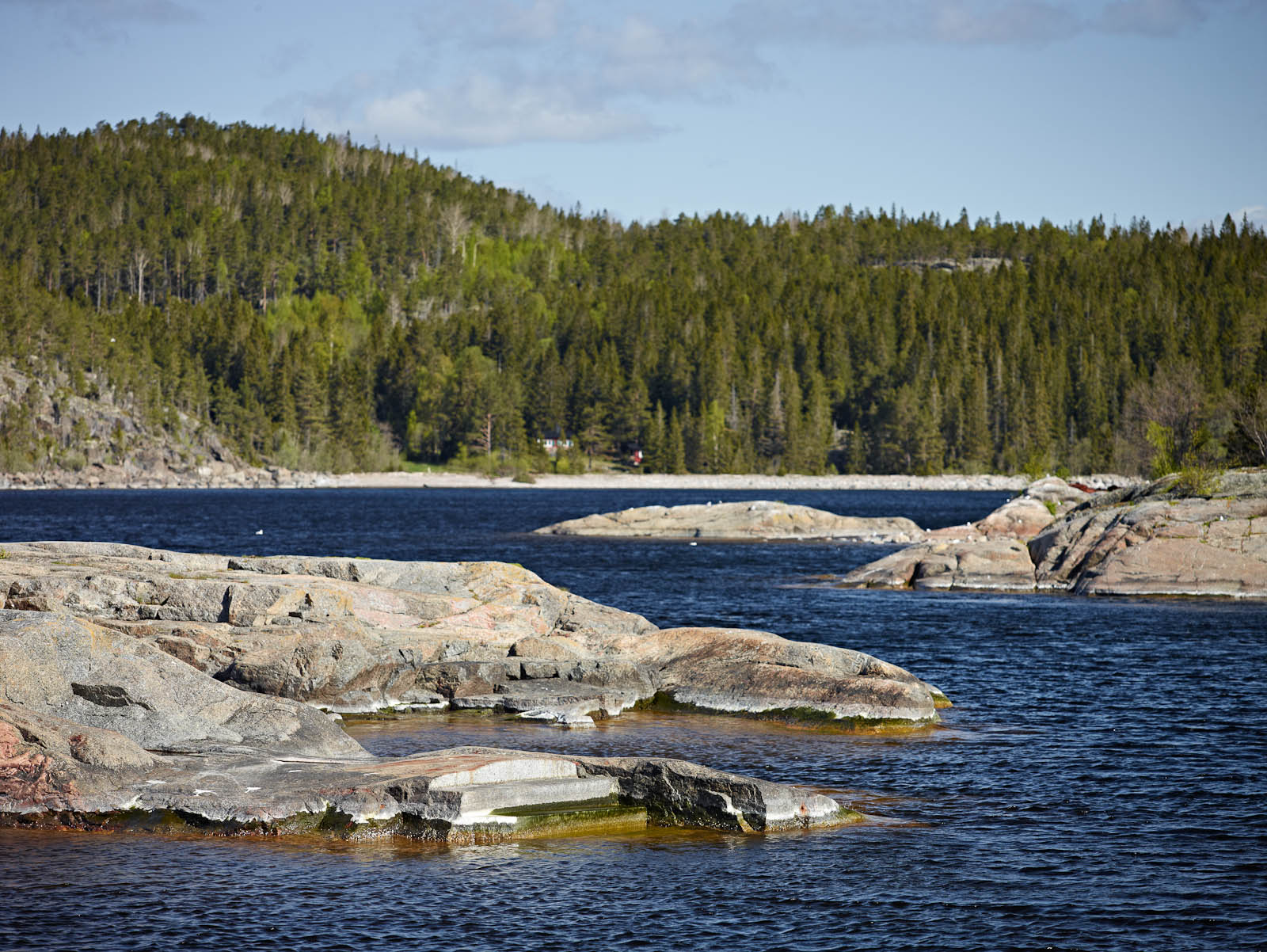
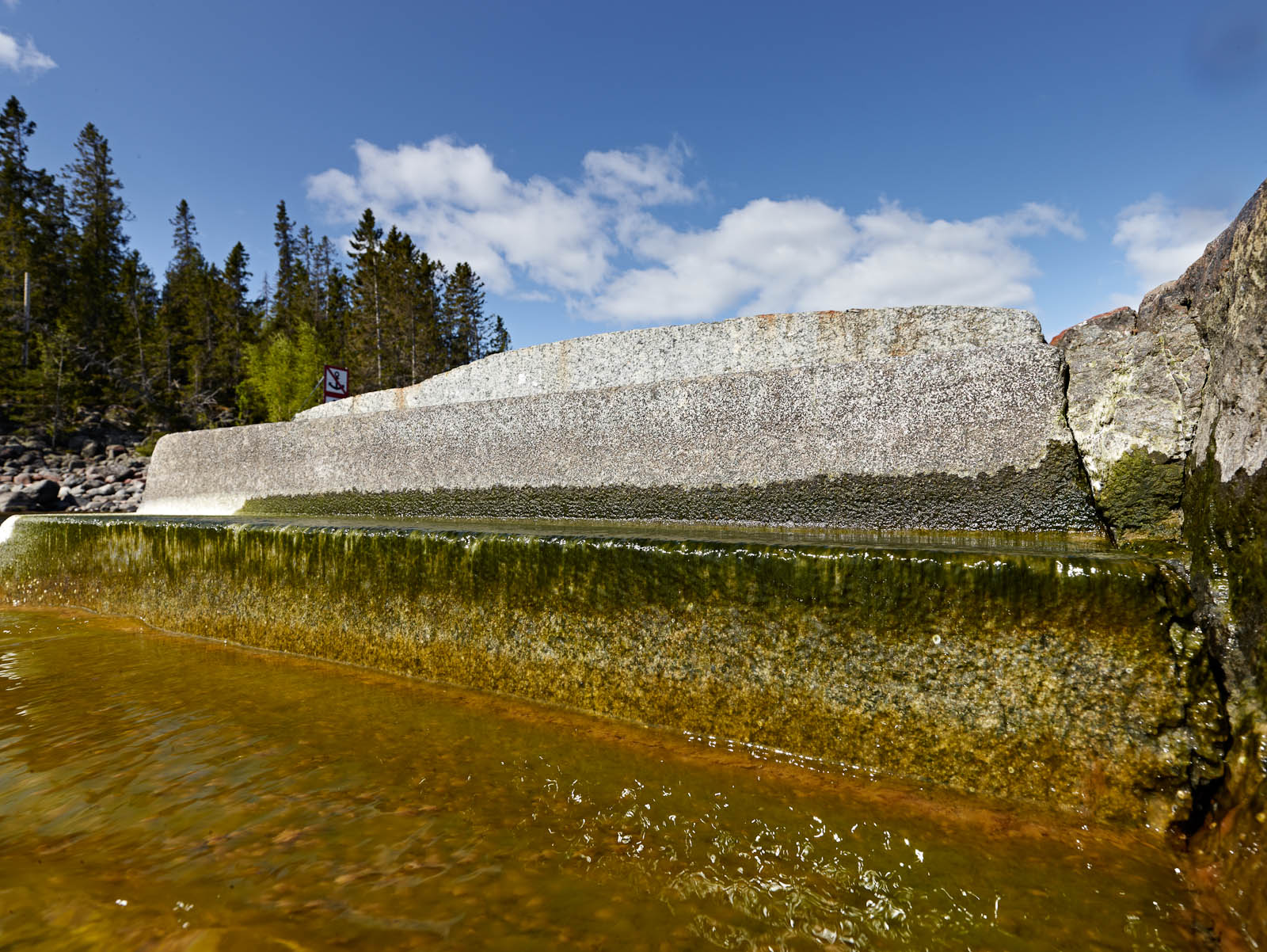
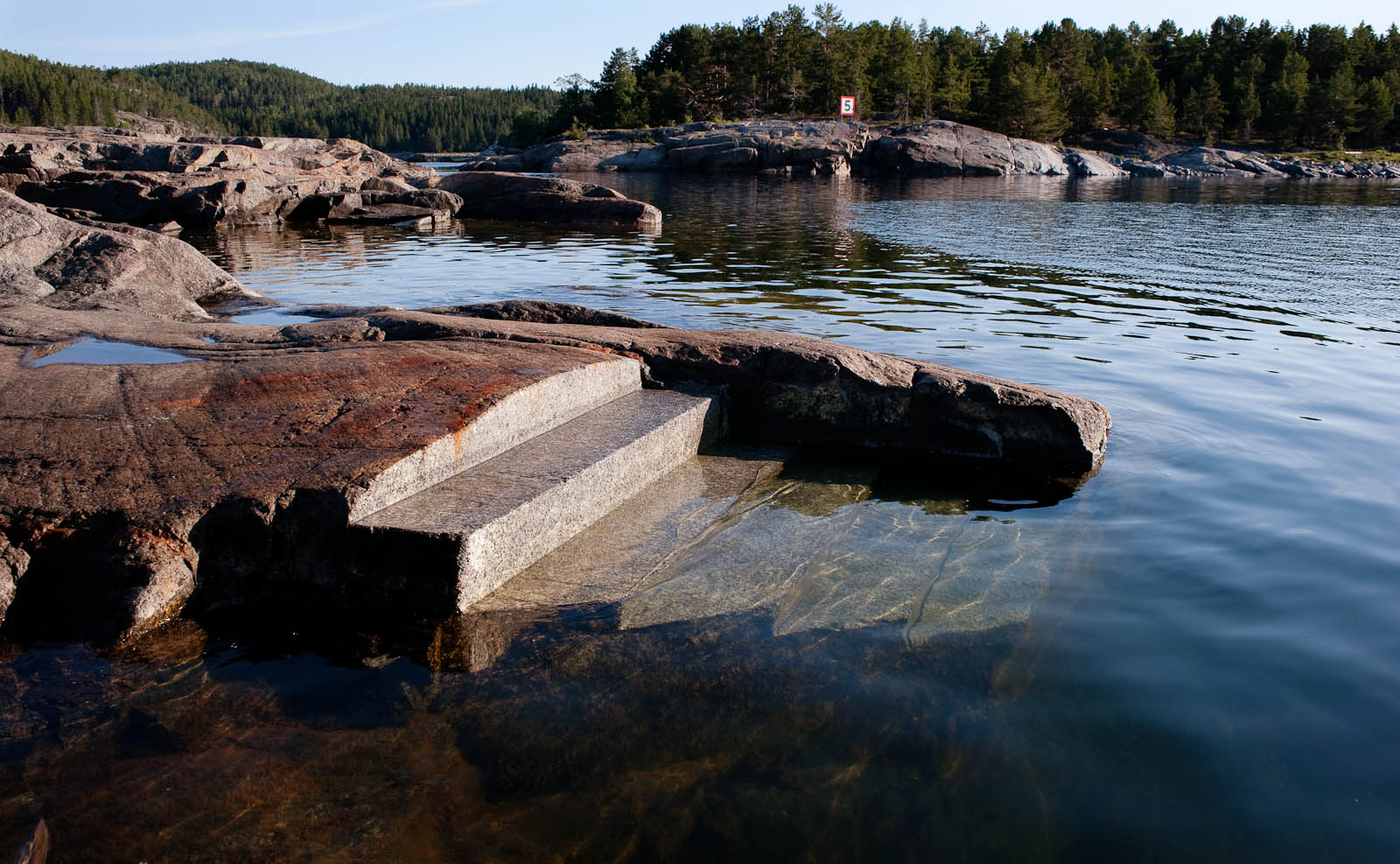
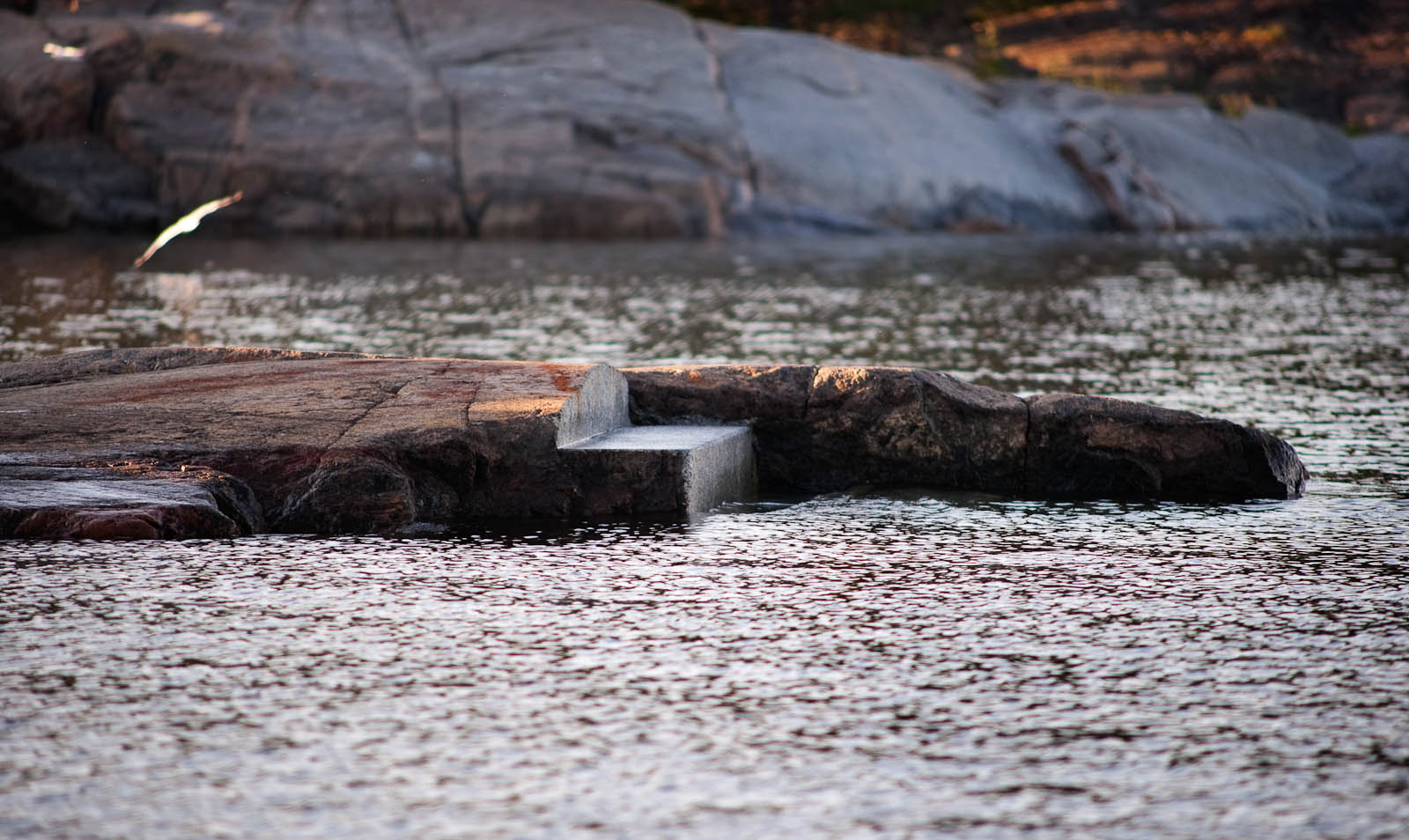
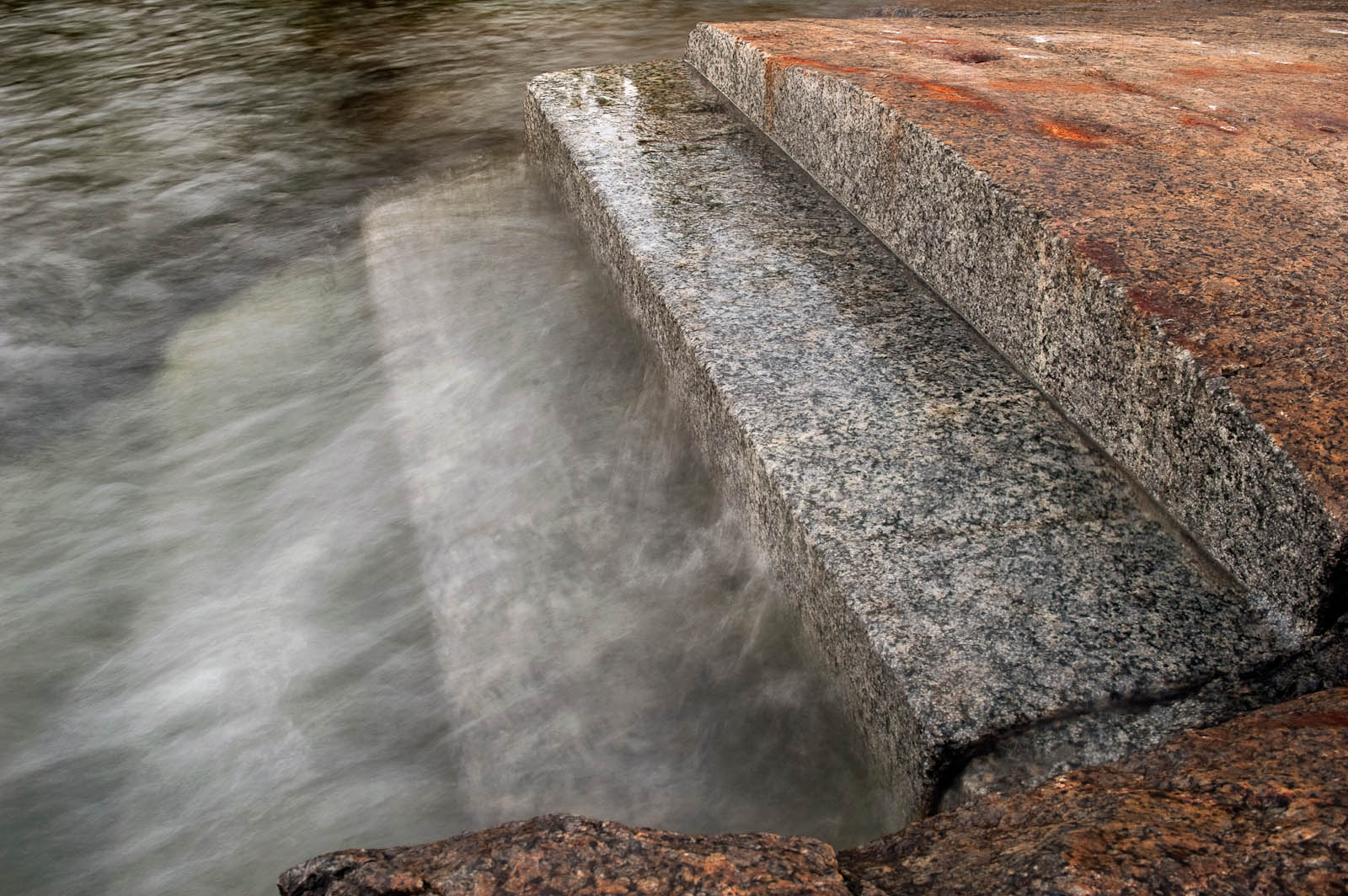





Löfström was struck by how the Höga Kusten (High Coast) coastline is so distinctly marked by time. With a land rise of 8 mm per year, that which is now deeply submerged in water will be on land a few generations from now. This was the feature that the artist decided to accentuate.
Passage consists of a staircase with five steps under the water. As time passes, these steps will appear, one by one, until they are entirely above water. Each step is of a height that corresponds to one generation. Accordingly, my grandchildren’s step is two steps down, and if I were to carry on downwards, I would reach that which lies beyond my lifetime.
As this current moves, the surface is rippled, and when the surface is broken, this affects the undercurrent.
Just over a century ago, the French philosopher Henri Bergson described the future as an undercurrent of the surface of the present. As this current moves, the surface is rippled, and when the surface is broken, this affects the undercurrent. Bergson’s reasoning reminds us of the complexity of Löfström’s work of art. Standing at its top, we can guess what it will be like to walk down the steps. Mean while, expectations change with every step we take, especially if we are reminded that the future will also be the past. The steps we leave behind are already, albeit slowly, on their way out of the water.
This movement shows how the work balances our different senses against one another. The physical experience is set against the desire of the eye and mind to understand and interpret. As we look down the steps, we think of what it will feel like to tread on the steps of future generations. But when we actually step on them, we experience entirely different dimensions of time – a time that is tactile, warm or cold, wet and immediate.
Cut in granite, Passage is both manifest and poetic, a place – deep in the current of time.
Håkan Nilsson
Find the artwork
Bönhamn, Sommaren 2011
870 30 Bönhamn, Sverige